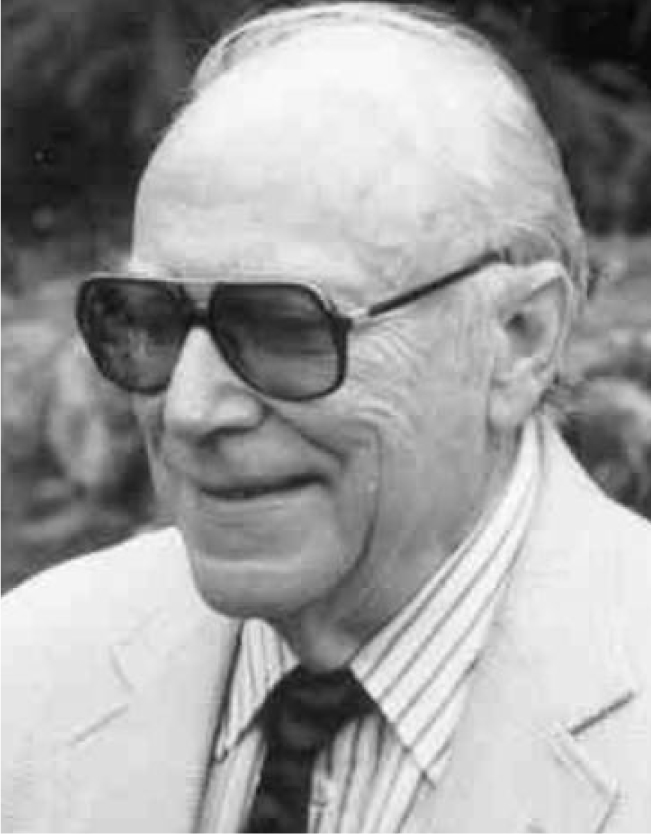Leon Madansky
DOI: 10.1063/1.1359720
Leon Madansky, Alonzo Decker Professor Emeritus at the Johns Hopkins University, whose research interests included nuclear physics and fundamental particles, died suddenly of a heart ailment on 18 March 2000 in London, England; he collapsed after attending a play at a West End theater on the last day of a week-long vacation.
Madansky was born in Brooklyn, New York, on 11 January 1923. He received three degrees in physics from the University of Michigan: a BS in 1942, an MS in 1944, and a PhD in 1948. His doctoral research with Marcellus Wiedenbeck involved studies in nuclear isomerism. During his graduate education, he was an assistant in a National Defense Research Committee war project. From 1944 to 1945, he was an ensign in the US Navy, assigned to the Naval Research Laboratory to conduct research in millimeter-wave radiation.
In 1948, Madansky was appointed an instructor in the physics department of the Johns Hopkins University. He served there for the rest of his life, although he spent two sabbatical leaves (in 1969 and 1974) at CERN on Guggenheim and NSF fellowships.
Madansky was active in research in nuclear, condensed matter, and particle physics. In 1950, he and his Hopkins colleague Franco Rasetti introduced the idea of forming beams of thermal-energy positrons. Their idea revolutionized low-energy positron research in the study of solids, surface, and atomic physics, and their hypotheses about positronium formation and positron diffusion were demonstrated in the decades that followed.
In 1964, Madansky and his Hopkins colleague George Owen established the feasibility of producing negative hydrogen and deuterium ion sources, in which the metastable atoms are polarized and then ionized. This work effectively opened up opportunities for subsequent research with polarized proton beams, a subject in which Madansky maintained an interest.
Madansky served as department chairman from 1965 to 1968; during that period, Hopkins started its now-thriving astrophysics program. In addition to his work at Hopkins, Madansky spent many summers conducting research at SLAC. He was also a scientist at the Relativistic Heavy Ion Collider (RHIC) at Brookhaven National Laboratory (BNL), where he was a member of the Solenoid Tracker at RHIC (STAR) collaboration.
In 1980, in his work at the BEVALAC at Lawrence Berkeley Laboratory, Madansky used the power of highly segmented arrays of almost 4π solid-angle detectors in heavy-ion physics to characterize central collisions. With this equipment, he made the first measurements of neutral pion production with Tim Hallman, his graduate student at the time. Madansky energetically advocated dilepton measurement as the signal of the early hard-scattering stage of collisions. This measurement was first implemented at the BEVALAC in the early 1980s and now incorporated in the HADES experiment at GSI, a heavy-ion research center in Darmstadt, Germany, and the PHENIX experiment at the RHIC.
In 1989, Madansky also pioneered another unique research technique in relativistic heavy-ion collisions at the BNL Alternating Gradient Synchrotron (AGS): the use of lambda polarization as a probe of the origin of strangeness production, which is thought to be a sensitive indicator of the possible transition in heavy-ion collisions from hot hadronic matter to a deconfined quark–gluon plasma. Madansky, who was always fond of polarization as a unique tool in particle and nuclear physics, was the first to make feasibility measurements to test the possibility of making this measurement, and in fact, he measured the first lambdas observed in relativistic heavy-ion collisions at the AGS.
In the early 1990s, Madansky was a major force behind the addition of the electromagnetic spectrometer in STAR for the study of spin physics with polarized proton beams. This concluded his study of polarization phenomena, which began with his efforts to produce polarized proton beams in the 1960s.
His long-term interest was in the development of experimental methods, especially particle detectors. As early as the 1940s, he worked on parallel plate detectors, the precursors of the spark chambers of the 1960s.
Popular with faculty and students, Madansky was instrumental in hiring many of the leading staff members of the department. A man of vision who started a number of the department’s programs, he passed on his knowledge by describing the latest results and challenging listeners to think about the questions those results raised. He was one of the most intuitive of physicists in a number of fields—a true generalist. He would ask colleagues about their current work and ideas and suggest additional research. Although he frequently provided seminal ideas, he would be reticent about being part of the publications that incorporated those ideas.
Madansky was a good conversationalist and a highly cultured man who enjoyed the arts. He was an amateur painter and often spent free time at art museums. He attended plays and the opera, particularly enjoying the music of Verdi and Puccini. He will be sorely missed by us all.


More about the Authors
Yung K. Lee. The Johns Hopkins University, Baltimore, Maryland, US .
Thomas Fulton. The Johns Hopkins University, Baltimore, Maryland, US .
Gordon Feldman. The Johns Hopkins University, Baltimore, Maryland, US .
